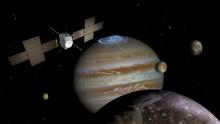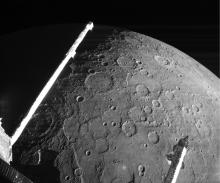Listen to today's episode of StarDate on the web the same day it airs in high-quality streaming audio without any extra ads or announcements. Choose a $8 one-month pass, or listen every day for a year for just $30.
You are here
Moon and Companions
We don’t know when or even if we’ll return to the Moon. And we certainly don’t know if we’ll ever build colonies there. But space agencies are laying the groundwork for such missions. Scientists in Europe, for example, are developing possible small lunar satellites, as well as materials for building permanent habitats on the Moon.
Four teams are spending the summer developing lunar cubesats — cubes about four inches on each side. Although they’re tiny, they can carry sensors that can do big work. And they can be combined to make larger satellites.
Several of these cubesats would support human missions to the Moon. One of them, for example, would monitor radiation at the Moon, which is key to understanding how to survive there. Another would map minerals and ices on the lunar surface; water ice could be an important resource for future colonies. And a third would watch for impacts by space rocks, which could endanger lunar visitors.
Other teams have used 3D printers to make bricks from simulated lunar dirt. The bricks are being tested to see how strong they are and how long they last. If they hold up, they could make it possible to build habitats using lunar materials — whenever that might happen.
And the Moon has two bright companions tonight. The star Antares stands below or to the lower left of the Moon at nightfall. The brighter planet Saturn is a bit farther to the left of the Moon. More about the Moon and Saturn tomorrow.
Script by Damond Benningfield





